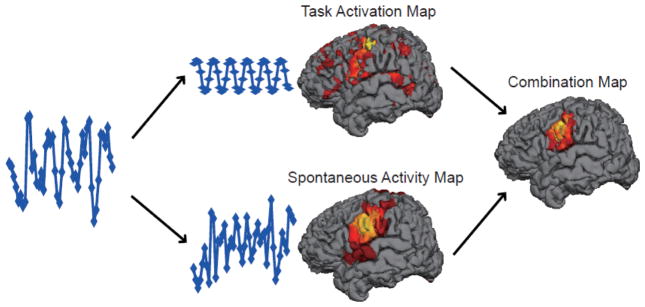Figure 1.
Methodological approach for combo mapping. Raw BOLD signal obtained from the left motor cortex during tongue movement is extracted (left panel) and decomposed into task-related variance (middle panel, top) and residual spontaneous variance (middle panel, bottom). The task-related variance is used to generate a conventional task activation map (middle panel, top) while the residual spontaneous variance is used to generate a functional connectivity map (middle panel, bottom). The task-based map and spontaneous activity map are combined in a weighted fashion to generate a combo map (right panel).

